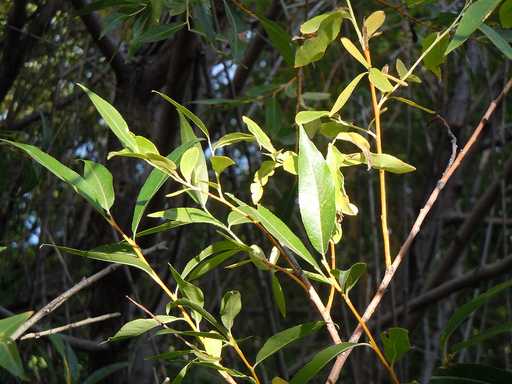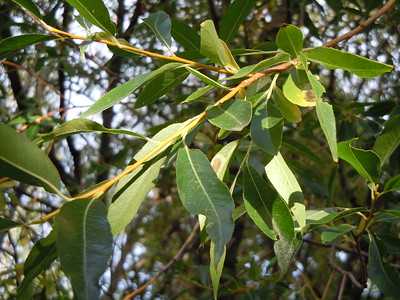Native Plant Spotlight - Pacific Willow (Salix lucida)
What is Pacific Willow?
Pacific willow or shinning willow (Salix lucida) is a native deciduous tree that grows in moist areas throughout much of Western North America. Pacific willow leaves are lance shaped and alternate in arrangement. This willow is one of the tallest native willow species in the area. The plant flowers or catkins bloom in May. Pacific willow can a great restoration tree for wild gardens and habitat sites. The yellow bark coloration on young growth can create a beautiful and colorful backdrop in the winter.
Photo Credit: Matt Lavin
Pacific Willow as a Wildlife Plant
The catkins of Pacific willow can attract pollinators such as butterflies and bees providing a early season pollen source. The foliage of the plant makes for great forage material for deer, elk, rabbits and other small mammals. The large size and density of the plant creates safe habitat for wildlife to hide in or create nests. Willows are also a favorite of beavers. The plant provides food and sticks in which the beaver uses to build dams and lodges. The plant can tolerate large amounts of herbivory. It often comes back denser after being chewed down by beavers. willows are great restoration plant to grow along lake and stream edges. The fast growing roots help stabilize banks and trap sediment from eroding into streams. This cover along water ways also works to shade the water often helping keep the water cool. Cool water is important to a variety of fish including salmon.
Plant Growth Habits
The mature plant can typically grows 15 to 50 ft tall with a spread of to 15 to 20 ft wide. The plant grows best in landscapes with full sun. It also prefers moist soils. In the winter prune out dead or damaged branches if needed. It can be grown using live cuttings or as nursery stock. Consider using this plant to restore your wetland or stream front property.
Photo Credit: Matt Lavin


